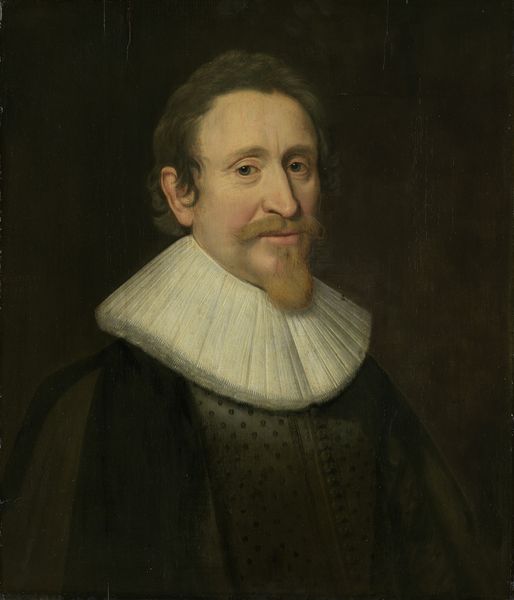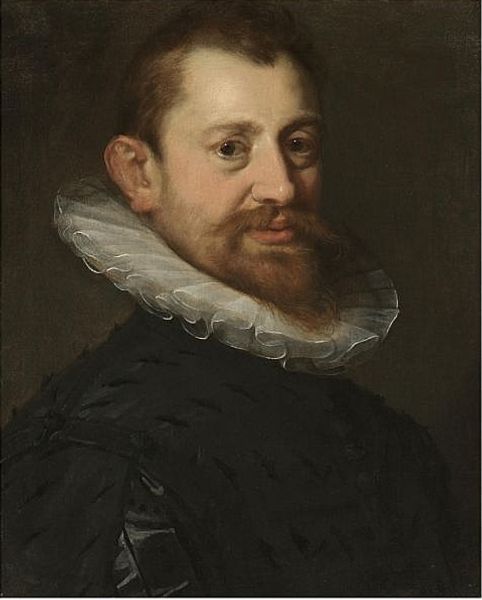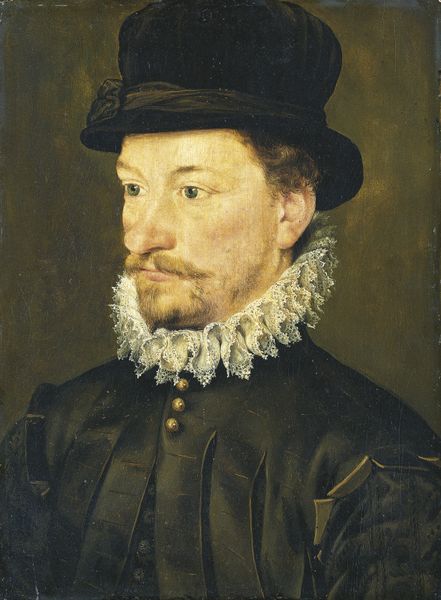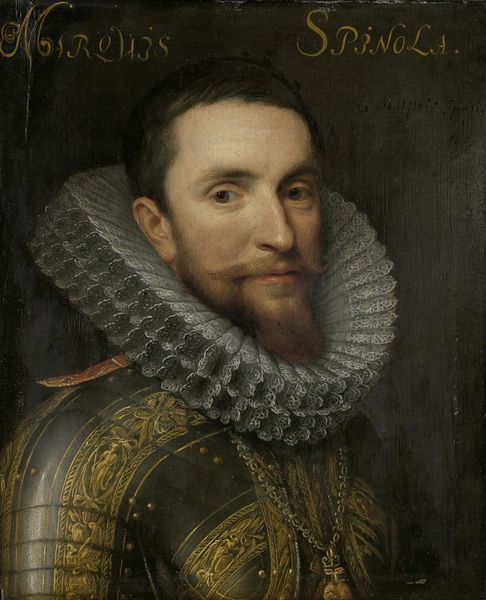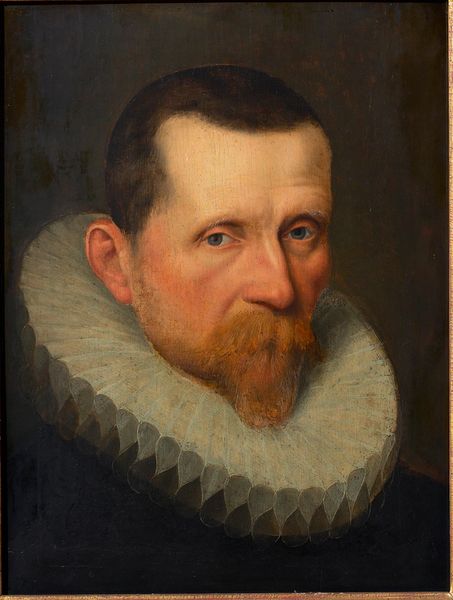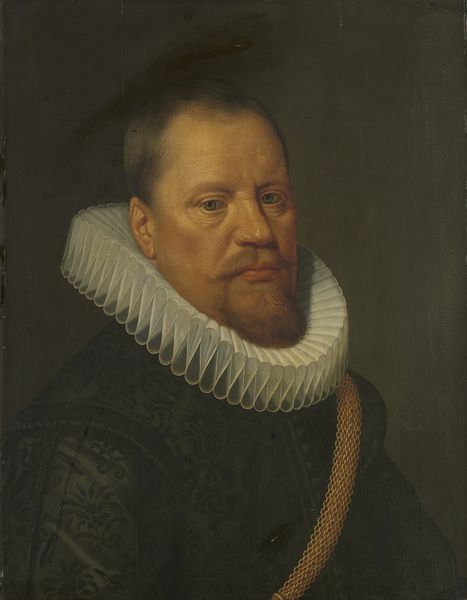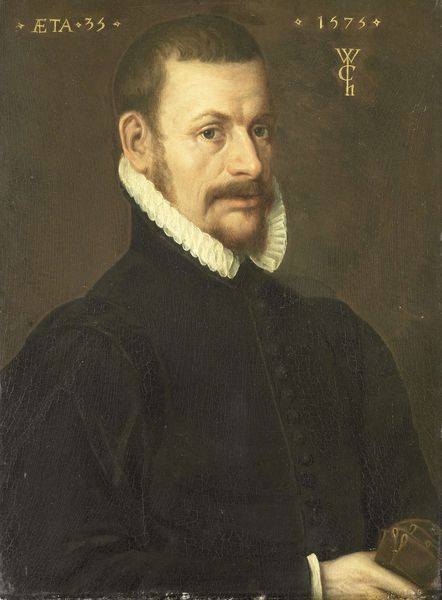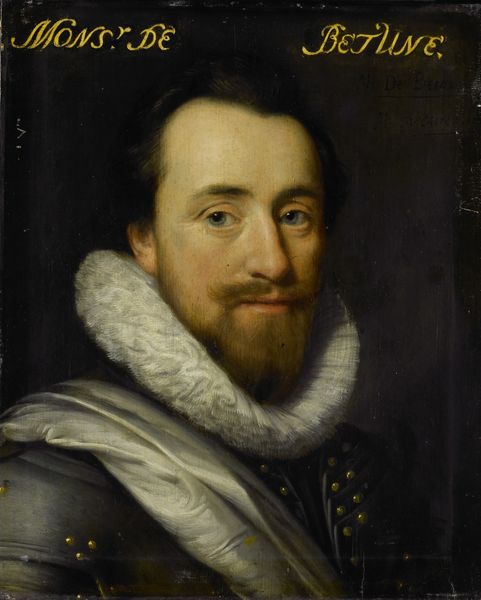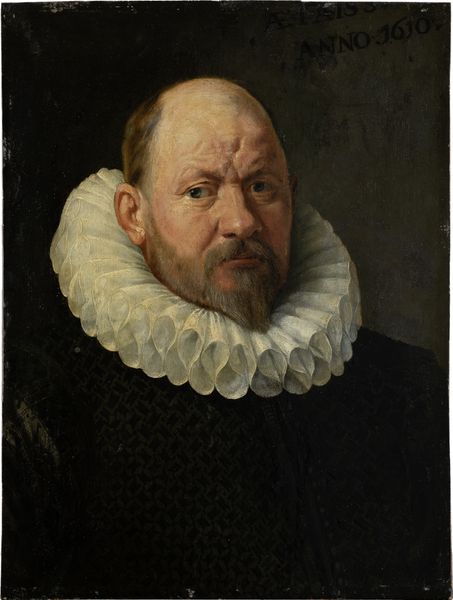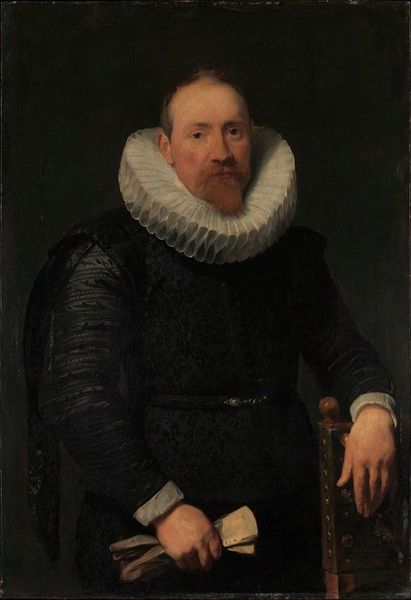
Dimensions: height 44.5 cm, width 33.5 cm, depth 6.5 cm
Copyright: Rijks Museum: Open Domain
Curator: This is "Portrait of a Man," created in 1581 by Adriaen Thomasz. Key. The painting, executed in oil, currently resides here at the Rijksmuseum. Editor: He has this weary gaze, doesn't he? As if he's carrying the weight of the world in those blue eyes. I wonder if that ruff is comfortable. I feel constricted just looking at it. Curator: The ruff was indeed a status symbol, signaling prosperity and adherence to social norms in that period. Key was known for his realistic portraiture. What's interesting here is the departure from idealized beauty; it feels honest. Editor: Honest to the point of vulnerability, perhaps. I detect a slight asymmetry, a humanity in his features. It feels so much more authentic than many other highly stylized portraits of the time. Did everyone actually walk around looking like this back then? Curator: Well, there was likely some degree of selection and perhaps some… touch-ups. The patronage system had its influence. But the subtle naturalism we observe with Key places him among a group of artists, during the period, challenging the artificiality demanded by some factions within court society. Editor: Almost a rebellion within a brushstroke, I like that thought. He must've had character, that one. And his face feels timeless, that slightly questioning gaze seems very current, I find myself wanting to know his thoughts and daily struggles, doesn't he give you that impression? Curator: Precisely. The power lies in the subtleties—the slightly furrowed brow, the pursed lips. Key's achievement resides in evoking presence across the centuries. What do you feel this work reveals about art's ability to resonate across the ages? Editor: It echoes! We're all essentially still the same. Worry, hope, doubt—those things never change, do they? Art makes the conversation so much richer. Curator: Indeed. Art endures and allows humanity, across time, to ponder.
Comments
rijksmuseum about 2 years ago
⋮
Unfortunately, the identity of this man wearing a ruff and slashed doublet is not known. The inscription at upper left reveals that he was 38 years old in 1581, when this portrait was painted. To judge from his Latin motto Patientia Spe (‘With patience and hope’), he must have been a cautious man – a trait that is certainly conveyed here.
Join the conversation
Join millions of artists and users on Artera today and experience the ultimate creative platform.

